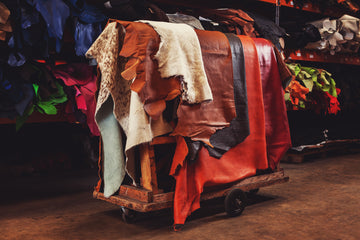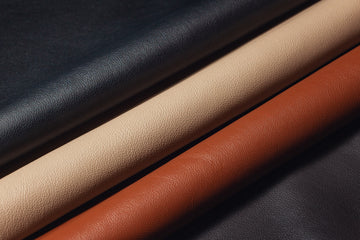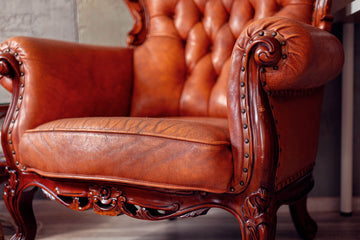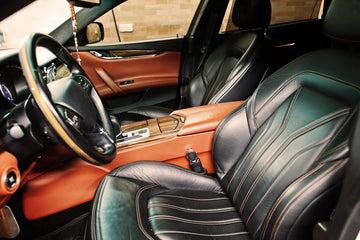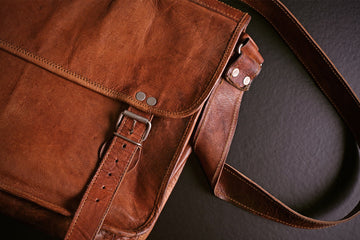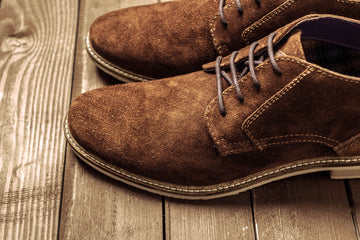Leather for bags making: how to choose the best?
If you are searching for a leather bag that exudes unparalleled elegance or will last you for a long time, this guide is here to help you find what you need. You will learn about all the different types and grains of leather materials and their unique characteristics based on the tanning process they undergo. Additionally, you can quickly determine which lining material would complement a particular leather type. This guide will simplify the process of finding the perfect leather type for any purpose with all the details provided.
Key takeaways
- This article provides an in-depth analysis of the various types, grains and tanning methods for leather used in bags, as well as lining materials and care tips.
- Recommended leathers include cowhide, full grain and vegetable tanned due to their superior quality, durability and natural appearance.
- Regular cleaning, conditioning & storage are crucial to maintaining a bag's optimal condition, purchase from experienced online retailers for best results.
Understanding different types of leather
When it comes to making leather bags, the material used plays an essential part in determining its quality, appearance and longevity. Commonly utilised types of leather for bag manufacture are cowhide - known for being robust, goatskin with a silkier texture but more flexible than cowhide. Then there is an exotic leather that includes crocodile, snake or ostrich skin – all providing distinctive patterns and textures.
To make sure you choose correctly when selecting your ideal bag, we should look into these different forms of leather closer to identify which type best suits your needs. All mentioned above have unique characteristics and benefits, so ensure good comprehension before deciding.
Cowhide leather
High-grade leather bags made with cowhide are well sought after for their durability, attractive natural texture and strength to combat wear. The various textures available range from smooth to furry, while the hide can be rigid or supple depending on how it was treated during tanning. These qualities vary according to the type of animal skin they were taken from and the preparation method used - a fantastic array of options one could select!
Preparing cowhide supple leather includes eliminating its fur before drying out and stretching it. This creates split leather that is reliable and long-lasting when completed correctly, which gives you an idea why so many opt for using quality cattle skin material, especially if there's a need for higher than standard performance garments/equipment, i.e. bag.
A balance between toughness, strength and charm makes cowskin a noteworthy choice for people choosing proficiently sturdy luxury accessories such as leather handbags.
Goatskin leather
Goat leather, or goatskin leather as commonly known, offers a distinctive ridged pattern and remarkably supple texture. This type of leather makes for an attractive material that can be used in many ways. From tooling to bookbinding through rugs and clothing items.
The primary advantage of this particular kind of hide lies in its water-resistant qualities, making goat skin perfect for fashion accessories that are liable to experience moisture exposure, such as bags. The softness of low-quality goat leather and malleability provide comfort and individual style options due to its unique texture.
Overall, goat's skins present not only stylishness but practicality too, making them a very versatile option when looking at different types of hides available on the market today!
Exotic leather
For anyone wanting something singular, exotic leathers can add an array of intriguing textures and designs to a handbag. This could include ostrich hide, python skin, bison leather, crocodile leather, lizard material, or stingray hide. One such unique type is camel leather, often used in making essential bags with a standout appearance. It's also regularly employed for shoes, wallets, jackets, and car upholstery gadgets like mobile devices and iPhone covers.
Yet before opting for this option, it is wise to consider all angles. Using exotic materials typically costs more than cowhide or goatskin products, plus they usually require additional care when looking after them if you wish these pieces to last longer.
Deciding upon investing in some exclusive textiles with their various designations, be confident your collection will be inundated by luxury and individuality, too!
The importance of leather grain
To comprehend the impact of leather grain on a bag's durability and look, let us analyse the three most common types - full grain, top grain, and genuine. All bring different traits that should be considered for your selection process.
Leather is crucial in determining how solid or attractive an accessory like this will be – whether it's complete, top or genuine grain makes all the difference here. We hope our analysis can help you decide on your new leather bag!
Full grain leather
Full grain leather is the premier type of hide available, composed of its top layer and retaining all natural markings from the animal. This material has an exquisite texture that results in a few flaws, making it a suitable choice for any high-quality leather bag. What makes full-grain leather bags so desirable over time is their ability to mature gracefully—developing into a nice patina, which adds personality to your possession and guarantees longevity with proper care.
Those looking for long-lasting durability should consider purchasing products made of full-natural grain leather, as they are superior to other types due to their fantastic qualities.
Top grain leather
Top grain leather is the second-highest quality of leather after full-grain leather. It is produced by removing the outermost layer of the hide to achieve a more uniform and consistent appearance. Although less strong and durable than full-grain leather, it retains its natural texture and is very appealing to many people.
The top-grain leather hide is an excellent alternative for those on a tight budget who still want a stylish and durable material. However, it is essential to maintain top grain leather to prolong its lifespan, as it lacks specific properties that higher-grade leathers, such as full-grain leather, possess.
Genuine leather
Genuine leather is an animal hide made from leftover pieces and fused layers. Although genuine leather offers cost-efficiency compared to other types like faux leather or top grain/full grain varieties, its lower quality can cause wear and tear more quickly than the other higher quality top grade options with intact natural textures.
It may be ideal for short-term use, such as in bags, if you want to invest only a little money. Replacing your bag may become necessary due to the inferior quality of this type of leather.
Tanning methods and their impact on leather bags
The tanning methods used to create your leather bag are significant in its longevity, comfort, and eco-friendliness. There are two primary methods of tanning - chrome tanning and vegetable tanning - each with its own set of benefits. Let's look at each type to help you understand how they impact the final product.
Vegetable-tanned hides are durable, whereas chrome-treated hides are more supple. This allows us to ensure that every item we craft meets your specific needs.
Vegetable tanned leather
Vegetable tanned leather is an environmentally friendly alternative that produces a thick, unique-looking material with lots of character and improves over time. This leather has been prepared using organic tanning agents sourced from plants such as tree bark or leaves – making it a much more sustainable choice than other methods.
To the eco-friendly benefits this type of leather presents, it's long-lasting quality plus various colours and finishes make for incredibly versatile design options when creating bags, meaning one can choose the perfect item for them!
For those seeking genuine handcrafted luggage made from natural materials, vegetable-tanned leatherette products are highly desirable due to their classic feel, natural oils, and warm ageing beauty.
Chrome tanned leather
Chrome-tanned leather is known for its flexibility and pliability compared to vegetable-tanned leather. However, it requires using chemicals that are harmful to the environment. The process of chrome tanning involves using acids, salts, and other chemical substances, making it cost-effective and faster than vegetable tanning.
If you are looking for a soft yet sturdy leather bag, then chrome-tanned leather may be ideal. However, it's essential to consider all the options and their positive and negative effects before making any decision. Ultimately, it's best to balance both types of leather to ensure durability and suppleness in the items made from this highly durable material while also considering the environmental impact.
Lining materials for leather bags
The materials used in making bags and lining are essential when offering added protection and resilience for your leather bag. Lining pigskin leather, cotton and canvas are commonplace options when selecting a suitable material for leather accessories, with each option giving different qualities.
To give you an idea of how these two common choices can impact the longevity of your leather accessory, we will take a closer look at their characteristics now, enabling you to make an informed decision about which one is most appropriate for your needs.
Making the right choice: best leather for bags
Before choosing your bag, you must be familiar with the various types of leather, their texture, and tanning techniques. Once you have a good understanding of this, you can make a well-informed decision. We will provide recommendations on which types of leather may be suitable based on your requirements and preferences. It's essential to consider the grain and the proper tanning technique while selecting the best quality leather that meets your needs.
What is the best leather for bags making?
We suggest cowhide, full-grain and vegetable-tanned leather for their long-lasting quality and attractive appearance. Cowhide leather bags are the ideal material for bags due to their suppleness, strength, flexibility and developing patina over time, making it a popular choice across all bag types.
Full grain offers unmatched resilience with the natural features of an animal hide intact - thus providing unique good looks whilst still enduring wear & tear. Vegetable tanning gives consumers sustainability. A crafty charm that only improves with age makes this kind of tanning process more desirable among those who opt for environmentally friendly options, too.
By selecting one of these recommended categories, you will get an aesthetically pleasing look and something robust simultaneously!
Preferred grain and tanning method
When considering the type of leather to tanning procedure for your bag, it's essential to factor in factors such as budget, look and eco-footprint.
Full-grain leather and a vegetable tanning method are suggested for an optimal outcome from quality and longevity. This produces a more robust product which looks natural. The slightly more expensive price tag for full grain offers greater value over time since the item will stay cherished longer than any other type available. Plus, one has peace of mind knowing that their choice positively affects ecology when opting for vegetable-tanned hides instead.
Ultimately, selecting these materials allows you to craft something explicitly tailored to what you want while being mindful of the environment all at once!
Caring for your leather bag
To maintain the longevity of your leather bag, you must look after animal leather and take care of it. The following tips will help you do this by offering information about cleaning, conditioning, and storing the leather properly.
It is essential for proper upkeep that one invests time in caring for their beloved leather bag – not only does looking after a piece create an impeccably stylish accessory, but it also preserves its quality long-term so that one can enjoy using their backpack leather handbag or pouch for years on end!
Summary
When looking for the perfect leather bag, it is essential to understand what types of leather are available and their grains and consider variables such as budget, looks and sustainability. We recommend cowhide leather, vegetable tanned or full grain leather versions for longevity and pleasing aesthetic qualities. Selecting a reliable inner lining material is essential.
Obtaining good quality tanned skins from reliable internet merchants guarantees that your chosen bag will be around for many years with proper maintenance techniques involved, too.
🔗 Shop the best leather for bags
Please get in touch with us if you have any questions about the different types and grades of leather used for making bags. We are here to provide you with a better understanding of each type of leather and help you choose the right one that will not only enhance the aesthetics of your bag but also ensure its longevity.
